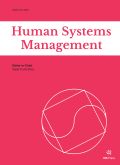Authors: Whalen, Thomas | Pollack, Daniel
Article Type:
Research Article
Abstract:
Millions of children worldwide need permanent families. But traditional paper based methods, disagreements between agencies, and excessive nationalistic restrictions keep many children apart from potential parents able and eager to nurture them. This paper focuses on the use of Weighted Ordered Weighted Averages and linear assignment programming for matching orphaned or abandoned children with adoptive families. Traditional paper based, one-child-at-a-time approaches are slow, and speed matters, because of the well documented harm done when children spend too much time waiting. Our focus is on simultaneous matching in which a pool of potential families is viewed as a resource to
…be used of the benefit for a pool of children in a global way rather than one at a time. A special case of the Weighted Ordered Weighted Average, designed to be transparent to social workers with little or no mathematical training or inclination, is used to aggregate criteria. The United States Department of Health and Human Services estimates that over 500,000 children are in foster care with 130,000 available for adoption [6]. In sub-Saharan Africa, Asia, Latin America, and the Caribbean, a joint report by the UN/AIDS/UNICEF/USAID estimates that in 2003 there were 143 million orphans [24]. Negative experiences with the foster care system also lead to more children available for adoption [8,10,15,16]. Furthermore, with the rapid increase in drug dependency, AIDS, child maltreatment, and homelessness, the number of children available for adoption increases concomitantly [1]. It is universally agreed that a more efficient and swifter system needs to be developed in order to place these children in permanent homes [2,14,17]. This paper focuses on the use of Weighted Ordered Weighted Averages [21] and linear assignment programming for matching orphaned or abandoned children with adoptive families. We begin by reviewing traditional paper based, one-child-at-a-time approaches using unaided human judgment or human judgment aided by semi-automated systems for preliminary screening and short-listing. The primary focus is on simultaneous matching in which a pool of potential families is viewed as a resource to be used for the benefit of a pool of children in a global way rather than one at a time. A special case of the Weighted Ordered Weighted Average, designed to be transparent to social workers with little or no mathematical training or inclination, is used to aggregate criteria.
Show more
Keywords: Ordered weighted average, aggregation, MCDM, adoption
DOI: 10.3233/HSM-2007-26104
Citation: Human Systems Management,
vol. 26, no. 1, pp. 35-45, 2007
Price: EUR 27.50





